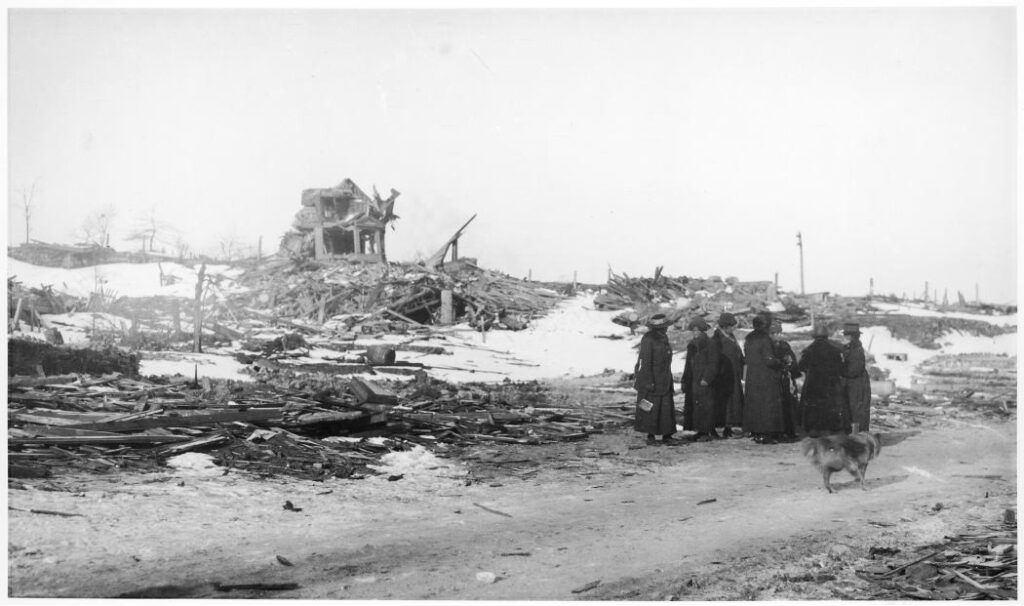1917 The Halifax Explosion

In the midst of World War I, Halifax harbour was an important shipping point for materiel headed to the Western Front. On December 6, 1917 two ships collided in that harbour, setting off the largest man-made explosion in history before the advent of the atomic bomb.
The two ships were the Norwegian merchant vessel Imo, en route to New York to pick up relief supplies for war-torn Belgium, and the other was the French ship Mont-Blanc, filled with tons of benzol, picric acid, TNT and gun cotton, set to join a convoy across the Atlantic. The Imo, steaming on the wrong side of the channel struck the Mont-Blanc, setting it ablaze. The French vessel’s crew abandoned ship leaving Mont-Blanc to drift closer to the populated shore. At 9:05 in the morning it exploded, destroying much of Halifax and damaging buildings 100 km away.
In her Curse of the Narrows Laura MacDonald describes the effect of the explosion:
The air blast blew through the narrow streets, toppling buildings and crashing through windows, doors, walls, and chimneys until it slowed to 756 miles an hour, five miles below the speed of sound. The blast crushed internal organs, exploding lungs and eardrums of those standing closest to the ship, most of whom died instantly. It picked up others, only to thrash them against trees, walls, and lamp posts with enough force to kill them. Roofs and ceilings collapsed on top of their owners. Floors dropped into the basement and trapped families under timber, beams and furniture. This was particularly dangerous for those close to the harbour because a fireball, which was invisible in the daylight, shot out over a 1–4 mile area surrounding the Mont-Blanc. Richmond houses caught fire like so much kindling. In houses able to withstand the blast, windows stretched inward until the glass shattered around its weakest point, sending out a shower of arrow-shaped slivers that cut their way through curtains, wallpaper and walls. The glass spared no one. Some people were beheaded where they stood; others were saved by a falling bed or bookshelf. . . . Many others who had watched the fire seconds before awoke to find themselves unable to see.
The north end of the city was wiped out by the blast and subsequent tsunami. Nearly 2,000 people died, another 9,000 were maimed or blinded, and more than 25,000 were left homeless. An international rescue effort was put in place, one which is still recognized by Haligonians who every year send a giant Christmas tree to Boston to acknowledge the aid that city sent.